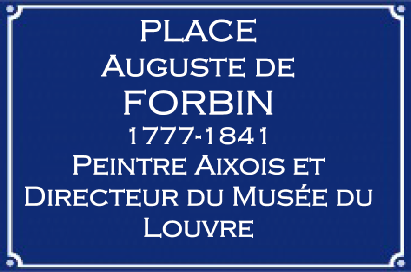
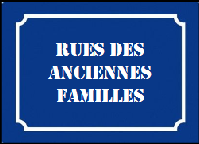

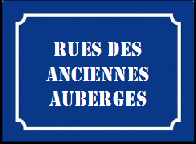

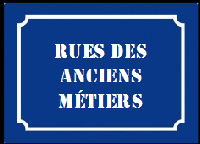
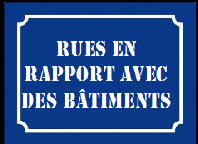



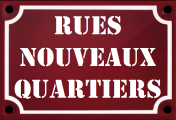





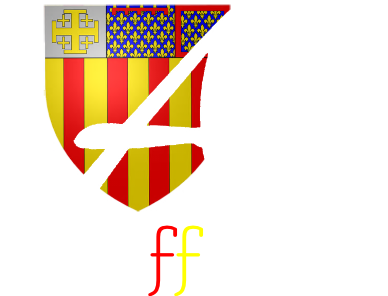





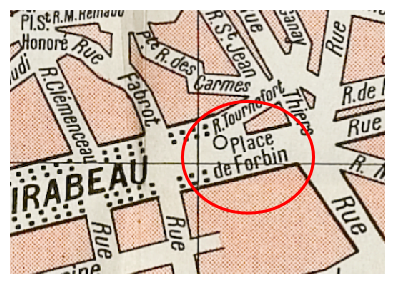


Auguste Comte de FORBIN est né au Château de la Roque d’Anthéron, près d’Aix, le 19 août 1777.
Il était le descendant de Palamède de FORBIN, ami fidèle du « Bon Roi RENÉ ». Leur résidence aixoise était l’Hôtel de Forbin sur le Cours MIRABEAU au n°20.
Son père et son frère furent guillotinés en 1793 alors qu’il n’avait que 16 ans. Cela n’empêchera pas sa mère de l’encourager dans l’étude du dessin en l’inscrivant à l’école d’Aix sous la direction de Jean-
En 1796, ils partent tous les deux à Paris et fréquentent le studio de Jacques-
En plus de sa carrière d’artiste, il était connu comme un sujet fidèle à BONAPARTE et à l’Empire. En 1799, il entame une carrière militaire qui sera entrecoupée de périodes de peinture. En 1807, il se distingue lors de la bataille d’Évora au Portugal. Il écrira tous ses souvenirs et cela lui vaudra d’être décoré de la Légion d’honneur en 1809, avant d’être nommé baron d’Empire un an plus tard.
Après la chute du premier Empire en 1815, il sera nommé par LOUIS XVIII directeur du Musée Royal. Il en profitera pour réorganiser le Musée du Louvre et créera celui du Luxembourg.
Auguste de Forbin meurt à Paris le 23 février 1841, à l’âge de 63 ans. Il est inhumé au cimetière Saint-
À voir au Musée Granet :
« Gonzague de Cordoue » et « Meurtre du roi Albert de Hongrie »
A consulter à la Bibliothèque Méjanes :
« Souvenirs de Sicile » et « Le Portefeuille du Comte de Forbin »
Le saviez-
Sur un côté du piédestal de la statue du « Bon Roi RENÉ » figure le médaillon de Palamède de Forbin, son ancêtre.
À visiter sur la Place de Forbin :
La Chapelle des Oblats, ancienne chapelle des carmélites, (fin du XVIIe siècle).
Auguste Comte de FORBIN was born at Château de la Roque d’Anthéron, near Aix, on August 19, 1777.
He was the descendant of Palamède de FORBIN, a faithful friend of “Good King RENÉ”. Their Aix residence was the Hôtel de Forbin on Cours MIRABEAU at n ° 20.
His father and brother were guillotined in 1793 when he was only 16 years old. This will not prevent his mother from encouraging him in the study of drawing by enrolling him in the Aix school under the direction of Jean-
In 1796, they both left for Paris and frequented Jacques-
In addition to his career as an artist, he was known as a loyal subject to BONAPARTE and the Empire. In 1799, he began a military career which was interspersed with periods of painting. In 1807, he distinguished himself at the Battle of Évora in Portugal. He would write down all his memories and this earned him the honor of being decorated with the Legion of Honor in 1809, before being appointed Baron of the Empire a year later.
After the fall of the First Empire in 1815, he was appointed by LOUIS XVIII director of the Royal Museum. He will take the opportunity to reorganize the Louvre Museum and create the Luxembourg Museum.
Auguste de Forbin died in Paris on February 23, 1841, at the age of 63. He is buried in Saint-
To see at the Granet Museum:
"Gonzaga of Cordoba" and "Murder of King Albert of Hungary"
To consult at the Méjanes Library:
"Souvenirs of Sicily" and "The Wallet of the Count of Forbin".
Did you know ?
On one side of the pedestal of the statue of "Good King RENÉ" is the medallion of Palamède de Forbin, his ancestor.
To visit on Place de Forbin:
The Chapel of the Oblates, former chapel of the Carmelites, (end of the 17th century).
